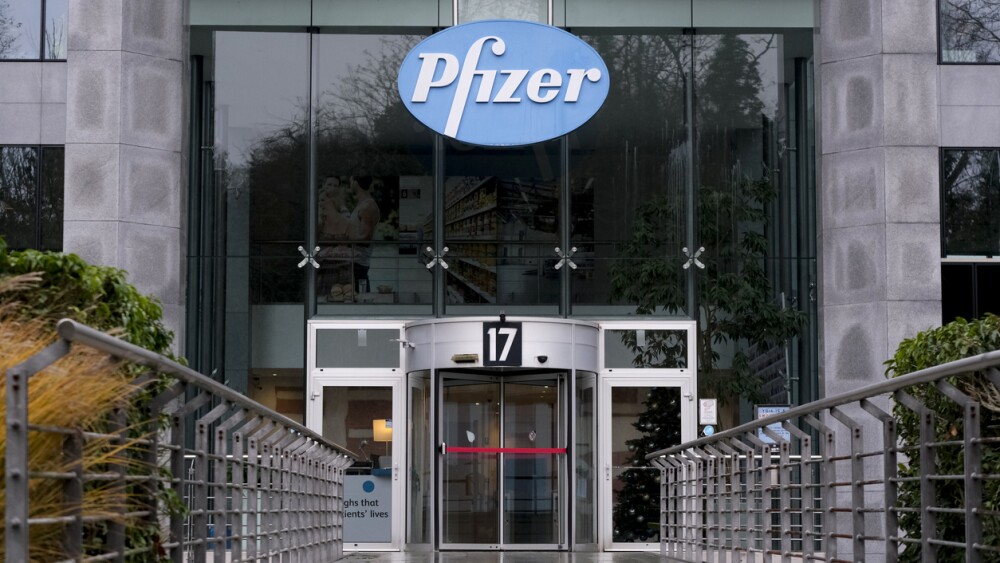Viking Therapeutics’ VK2735 achieves a 10.9% placebo-adjusted weight loss at 13 weeks, but a less than ideal safety profile marred the results.
Viking Therapeutics’ investigational obesity pill VK2735 achieved more than 12% body weight reduction at 13 weeks, putting it largely in-line with other oral weight-loss medications. But a less than ideal safety profile marred the results.
"[I]nvestors expected a squeaky clean tolerability profile with strong efficacy,” BMO Capital Markets analysts wrote Tuesday morning. “Data demonstrated half of this.”
Viking’s stock is down about 40% after the markets opened Tuesday morning.
Phase II data released Tuesday come from the VENTURE-Oral trial, which enrolled 280 adults with obesity who were treated daily with one of six investigational VK2735 doses or a placebo. Treatment lasted for 13 weeks, after which the trial measured percent change in body weight. Results showed that at the highest dose level of 120 mg, patients treated with VK2735 lost 12.2% of their body weight, an effect that was highly statistically significant, as per Viking’s release.
On a placebo-corrected basis, VK2735 lowered body weight by as high as 10.9% at 13 weeks. Likewise, 80% of patients hit at least 10% weight loss at this time point, versus 5% of placebo comparators.
“Weight loss showed a clear dose response with increasing weight loss and statistical significance at doses starting at 15mg and progressing to 120mg,” BMO wrote.
Indeed, the data appear aligned with what William Blair analysts set as the bull case in an Aug. 12 note to investors. Using Novo Nordisk’s amycretin as a benchmark—and with the appropriate caveats that the molecules work via different mechanisms and cross-study comparisons are inconclusive—the analysts wrote that placebo-adjusted weight loss from 9% to 12% would be “aspirational” for Viking.
Viking documented that 20% of patients treated with its obesity pill dropped out of the study due to side effects, as opposed to only 13% of patients receiving placebo. Almost all adverse events, which were predominantly gastrointestinal in nature, were mild or moderate in severity. Nausea occurred in 58% of VK2735-treated patients and vomiting arose in 26%.
“While efficacy for VK2735 was clear, tolerability issues were similar to worse than what we have previously seen with oral agents and are clearly a step-down compared to [Eli Lilly’s] injectable tirzepatide,” according to the BMO group.
VK2735’s readout comes less than two weeks after Lilly released Phase III data for its own oral obesity bet orforglipron. At 72 weeks, orforglipron cut body weight by 12.4%, coming slightly ahead of VK2735 (again on a cross-trial basis), but behind the 13.7% weight loss with Novo’s injectable semaglutide.
Nausea was a common side effect of orforglipron, occurring in 33.7% of patients treated at its highest dose of 36 mg. Vomiting and diarrhea had frequencies of 24% and 23.1%, respectively. 10.3% of patients treated with 36-mg orforglipron dropped out of the trial due to toxicities, versus 2.6% in pacebo.
As in the case of Viking, investors weren’t happy with Lilly’s readout and sent the pharma’s stocks tumbling 7% in its aftermath.
Another consideration for these next-gen obesity drugs is manufacturing. BMO analysts noted that Viking’s drug requires two- to four-times higher active pharmaceutical ingredient (API) than tirzepatide to reach comparable placebo-adjusted weight loss. “Such a difference highlights a key manufacturing pressure that may exist to produce VK2735 and compete in the competitive obesity market.”






